Philosophy
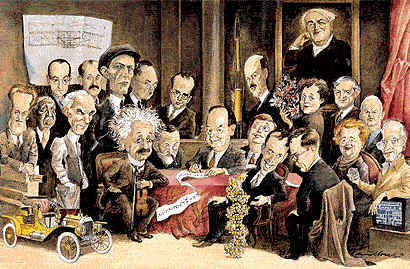
- Deceased--sir Bernard Lovell
Sir Bernard Lovell August 31st, 1913 to August 6th, 2012 "Sir Bernard Lovell Dies at 98; a Radio Telescope Bears His Name" by Don R. Hecker August 8th, 2012 The New York Times Sir Bernard Lovell, a pioneer in radar and radio telescopes from the days when...
- Deceased--herbert Hauptman
Herbert Hauptman February 14th, 1917 to October 23rd, 2011 "Herbert Hauptman dies at 94; won Nobel Prize in chemistry" Herbert Hauptman's research on determining molecular structures using X-ray crystallography became indispensable to modern chemistry...
- Deceased--rosalyn Sussman Yalow
Rosalyn Sussman Yalow July 19th, 1921 to May 30th, 2011 "Rosalyn S. Yalow, Nobel Medical Physicist, Dies at 89" by Denise Gellene June 1st, 2011 The New York Times Rosalyn S. Yalow, a medical physicist who persisted in entering a field largely reserved...
- Deceased--aage Bohr
Aage Bohr June 19th, 1922 to September 8th, 2009 "Denmark's Nobel prize winner Aage Bohr dies at 87" by Jan M. Olsen September 19th, 2009 Associated Press COPENHAGEN — Aage Bohr, a nuclear physics professor and Nobel laureate like his father,...
- Deceased--edwin E. Salpeter
Edwin E. Salpeter December 3rd, 1924 to November 26th, 2008 "Edwin E. Salpeter, Leader in Astrophysics Study, Dies at 83" by The Associated Press November 29th, 2008 ITHACA, N.Y. (AP) — Edwin E. Salpeter, an astrophysicist widely known for his studies...
Philosophy
"Today In Science History"--great newsletter

A most interesting website to visit and one can subscribe to have the daily newsletter, listing the day's people and events in science.
Today In Science History
Here is today's newsletter...
Today In Science History
Here is today's newsletter...
| FEBRUARY 27 - BIRTHS | |
| David Hunter Hubel | |
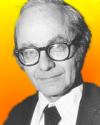 (source) |  Born 27 Feb 1926 Born 27 Feb 1926  Canadian-born American neurobiologist, who was a corecipient (with Torsten Nils Wiesel and Roger Wolcott Sperry) of the 1981 Nobel Prize for Physiology or Medicine for mapping the path of nerve impulses from the eye to various centres of the brain. In 1958, Hubel joined Wiesel at Johns Hopkins University, and the two relocated to Harvard in 1959. Their work was made possible by a number of technical advances. From the early 1950s onward it became possible to use microelectrodes to monitor the activity of a single neuron. Their studies were in the area of visual perception, with particular emphasis on the nerve impulses mediating between the retina and the brain. They observed that various nerve cells were responsible for different types of visual stimuli. |
| Kelly Johnson | |
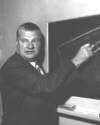 (source) |  Born 27 Feb 1910; died 21 Dec 1990. Born 27 Feb 1910; died 21 Dec 1990.(Clarence Leonard) "Kelly" Johnson was a American aeronautical engineer who introduced innovative designs. While managing Lockheed's secret project division, known as the "Skunk Works," he contributed to more than 40 airplanes. His early work included the P-38 Lightning fighter (1938) and the Hudson bomber. Later, he developed the fastest supersonic and highest-flying airplanes in the world. The U-2 (1954) was the first plane designed for routine flight above 60,000 feet. The F-104 Starfighter interceptor (1954) was capable of flying at twice the speed of sound, setting world records of 1,400 mph and 103,000 ft altitude.«  Kelly: More Than My Share of It All, by Clarence L. "Kelly" Johnson. Kelly: More Than My Share of It All, by Clarence L. "Kelly" Johnson. |
| Yuly Borisovich Khariton | |
 (source) |  Born 27 Feb 1904; died 19 Dec 1996. Born 27 Feb 1904; died 19 Dec 1996.Russian physicist who played a key role in the development of the Soviet Union's nuclear weapons and nuclear physics research. Khariton began his career as a researcher in chemical physics, studying combustion and explosion effects. In 1926-28 he studied and worked in Ernest Rutherford's Laboratory in Cambridge, England. Upon his return to the Soviet Union, he directed nuclear research at the Arzamas-16 centre through the 1930's and 1940's. He oversaw the preparation, assembly and detonation of the Soviet atomic bomb, which was built using stolen blueprints of the American plutonium bomb. The first Soviet A-bomb was detonated on 29 Aug 1949 at the Semipalatinsk test range.« |
| Charles Best | |
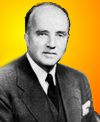 (source) |  Born 27 Feb 1899; died 31 Mar 1978. Born 27 Feb 1899; died 31 Mar 1978.Charles Herbert Best was an American physiologist who, while 22 years old, assisted Dr Frederick Banting, in Toronto, Canada, with the discovery (1921) of a pancreatic extract - the hormone insulin - that could control diabetes in the dogs they used as test subjects. This led to human diabetics being treated with insulin. Banting (with J.J.R. Macleod) received the 1923 Nobel Prize for Physiology or Medicine. Best was not nominated because he did not receive his medical degree until 1925. However, Banting recognized Best's role by later voluntarily sharing the prize money with him. Best also discovered the vitamin choline and the enzyme histaminase. He was the first to introduce anticoagulants in treatment of thrombosis (blood clots).« |
| Bernard(-Ferdinand) Lyot | |
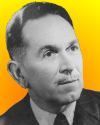 (source) |  Born 27 Feb 1897; died 2 Apr 1952. Born 27 Feb 1897; died 2 Apr 1952.Bernard(-Ferdinand) Lyot was a French astronomer who invented the coronagraph (1930), an instrument which allows the observation of the solar corona when the Sun is not in eclipse. Earlier, using his expertise in optics, Lyot made a very sensitive polariscope to study polarization of light reflected from planets. Observing from the Pic du Midi Observatory, he determined that the lunar surface behaves like volcanic dust, that Mars has sandstorms, and other results on the atmospheres of the other planets. Modifications to his polarimeter created the coronagraph, with which he photographed the Sun's corona and its analyzed its spectrum. He found new spectral lines in the corona, and he made (1939) the first motion pictures of solar prominences.« |
| Ralph Linton | |
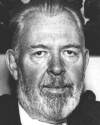 |  Born 27 Feb 1893; died 24 Dec 1953. Born 27 Feb 1893; died 24 Dec 1953.American anthropologist who had a marked influence on the development of cultural anthropology. After combat in France during World War I, he received a Ph.D. from Harvard (1925). In the early 1920's he did fieldwork in Polynesia. He introduced the terms "status" and "role" to social science and influenced the development of the culture-and-personality school of anthropology. His works, such as The Study of Man (1936) and The Tree of Culture (1955), are regarded more as popularizations of anthropology than as original scholarship. |
| David Sarnoff | |
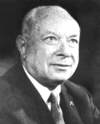 1971(EB) |  Born 27 Feb 1891; died 12 Dec 1971. Born 27 Feb 1891; died 12 Dec 1971.American pioneer in the development of both radio and television broadcasting. He was the first general manager of RCA and founded the television network NBC (1926). His first job was that of delivery boy, and his life continued to display a rags-to-riches element. He became a wireless operator and met Marconi in 1906. Foreseeing the multiple possibilities of radio, he became commercial manager of American Marconi in 1917, having already predicted that radio would become "a household utility in the same sense as the piano or phonograph". RCA succeded the Marconi group (1919), and Sarnoff became its general manager (1921) then its president (1930-50). He steering it into the world of television, first black and white, then colour with NBC. |
| L.E J. Brouwer | |
 (source) |  Born 27 Feb 1881; died 2 Dec 1966. Born 27 Feb 1881; died 2 Dec 1966.L(uitzen) E(gbertus) J(an) Brouwer was a Dutch mathematician who founded mathematical Intuitionism (a doctrine that views the nature of mathematics as mental constructions governed by self-evident laws). He founded modern topology by establishing, for example, the topological invariance of dimension and the fixpoint theorem. (Topology is the study of the most basic properties of geometric surfaces and configurations.) The Brouwer fixed point theorem is named in his honor. He proved the simplicial approximation theorem in the foundations of algebraic topology, which justifies the reduction to combinatorial terms, after sufficient subdivision of simplicial complexes, the treatment of general continuous mappings. |
| Henry Chandler Cowles | |
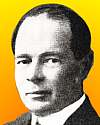 (source) |  Born 27 Feb 1869; died 12 Sep 1939 Born 27 Feb 1869; died 12 Sep 1939American botanist who was a pioneer in the field of plant ecology, especially the concept of dynamic ecology, which he devised in the 1890's through a study of sand dune vegation at the southern end of Lake Michigan. He observed ecological succession, whereby starting with a bare habitat, there is a sequence of biological communities, each providing modification of the habitat to favour successors, until a climax community is established, characteristic of the climatic conditions of the region. His field work there showed that the vegetation at any one point in the system is related to the distance the point lies from the lake, the kind of soil present at the location, and the time period over which seeds and spores have had a chance to germinate.« |
| Alice Hamilton | |
 |  Born 27 Feb 1869; died 22 Sep 1970. Born 27 Feb 1869; died 22 Sep 1970.American pathologist, known for her research on industrial diseases. By actively publicizing the danger to workers' health of industrial toxic substances, she contributed to the passage of workmen's compensation laws and to the development of safer working conditions. In 1911, she accepted an appointment as special investigator for the U.S. Bureau of Labor. These duties led her into field investigations of mines, mills, and smelters. Concentrating at first on lead, the most widely used industrial poison, she compiled statistics dramatically documenting the high mortality and morbidity rates of workers. She later did the same for aniline dyes, picric acid, arsenic, carbon monoxide, and many other industrial poisons. Hamilton died when 101 yrs old. |
| FEBRUARY 27 - DEATHS | |
| George Herbert Hitchings | |
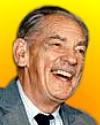 (source) |  Died 27 Feb 1998 (born 18 Apr 1905) Died 27 Feb 1998 (born 18 Apr 1905)American pharmacologist was a medical research pioneer who was awarded a share of the Nobel Prize for Physiology or Medicine in 1988 (with Gertrude B. Elion and Sir James W. Black) for development of drugs for several major diseases. In the 1950s, he and colleague Elion developed thioguanine and 6-mercaptopurine, that treated leukemia, and in 1957, azathioprine, used in treating severe rheumatoid arthritis and other autoimmune disorders. Their drug allopurinol was effective treatment for gout. Other important drugs they developed include pyrimethamine, an antimalarial agent; trimethoprim, a treatment for urinary and respiratory tract infections; and acyclovir, the first effective treatment for viral herpes.« |
| William Ross Maples | |
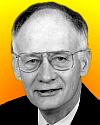 (source) |  Died 27 Feb 1997 (born 7 Aug 1937) Died 27 Feb 1997 (born 7 Aug 1937)American forensic anthropologist who examined and identified the skeletons of a number of historical figures, including Tsar Nicholas II and other members of the Romanov family killed in 1918 by the Bolsheviks, Vietnam MIAs, conquistador Francisco Pizarro, and in 1994 helped convict Byron De La Beckwith of the 1963 murder of civil rights leader Medgar Evers. At the University of Florida, the C.A. Pound Human Identification Laboratory was created through Maples' energetic fundraising. This sophisticated, unique facility, dedicated to forensic anthropology opened its doors in 1986. Maples wrote Dead Men Do Tell Tales (1994, with Michael Browning). |
| Kingsley Davis | |
 Died 27 Feb 1997 (born 20 Aug 1908) Died 27 Feb 1997 (born 20 Aug 1908)  American sociologist and demographer who was a world-renowned expert on population trends; he coined the terms population explosion and zero population growth and promoted methods of bringing the latter about. His specific studies of American society led him to work on a general science of world society, based on empirical analysis of each society in its habitat. Later, however, he came to be concerned about low birthrates in developed countries, fearing a shortage of educated leaders. | |
| Konrad Lorenz | |
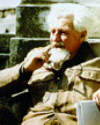 (source) |  Died 27 Feb 1989 (born 7 Nov 1903) Died 27 Feb 1989 (born 7 Nov 1903)Austrian zoologist, founder of modern ethology, the study of animal behaviour by means of comparative zoological methods. He was known affectionately by his pupils as the "father of the grey geese" which he studied. His ideas revealed how behavioral patterns may be traced to an evolutionary past, and he was also known for his work on the roots of aggression. He shared the 1973 Nobel Prize for Physiology and Medicine, for developing a unified, evolutionary theory of animal and human behaviour. He was also a vehement environmentalist, criticizing prodigality and believed that nature protection is necessary for the preservation of humanity. Even late in life, he participated in demonstrations even if in conflict with government and authorities. |
| David Keilin | |
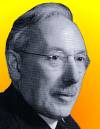 (source) |  Died 27 Feb 1963 (born 21 Mar 1887) Died 27 Feb 1963 (born 21 Mar 1887)Russian-British biochemist who discovered cytochromes, as enzymes critical to the cell's use of oxygen (1923). His career began as an entomologist studying the life cycles of flies. While studying the absorption spectrum of the muscles of the horse botfly, that he noticed four absoption bands that disappeared when the cell suspension was shaken in air, but reappeared afterwards. He had found a respiratory enzyme. He named it cytochrome, and began a thorough investigation of its role in cellular respiration. Like haemoglobin, the cytochrome enzyme contains iron. Cytochrome is a pigment found in some cells, such as bacteria and yeast. He studied also catalase and peroxidase which are also iron-containing enzymes with a role involving oxygen. |
| Ivan Petrovich Pavlov | |
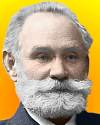 (source) |  Died 27 Feb 1936 (born 14 Sep 1849) Died 27 Feb 1936 (born 14 Sep 1849)Russian physiologist known chiefly for his development of the concept of the conditioned reflex. In a now-classic experiment, he trained a hungry dog to salivate at the sound of a bell, which was previously associated with the sight of food. He received the 1904 Nobel Prize in Physiology or Medicine. |
| Adam Sedgwick | |
 Died 27 Feb 1913 (born 28 Sep 1854) Died 27 Feb 1913 (born 28 Sep 1854)English zoologist, a grandnephew of the geologist Adam Sedgwick, who is best known for his researches on the wormlike organism Peripatus, which he recognized as the zoologically important connecting link between the Annelida, or segmented worms, and the Arthropoda, such as crabs, spiders, and insects. | |
| Samuel Pierpont Langley | |
 Died 27 Feb 1906 (born 22 Aug 1834) Died 27 Feb 1906 (born 22 Aug 1834)American astronomer, physicist, and aeronautics pioneer who built the first heavier-than-air flying machine to achieve sustained flight. He launched his Aerodrome No.5 on 6 May 1896 using a spring-actuated catapult mounted on top of a houseboat on the Potomac River, near Quantico, Virginia. He also researched the relationship of solar phenomena to meteorology.« | |
| Bryan Donkin | |
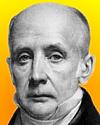 (source) |   Died 27 Feb 1855 (born 22 Mar 1768) Died 27 Feb 1855 (born 22 Mar 1768)English mechanical engineer and inventor. After the Fourdrinier brothers imported from France a prototype machine for making paper in continuous lengths (1802), Donkin assisted with design improvements and to establish a factory. By 1808, Donkin acquired the works and a license to manufacture the paper-making machines. He also developed printing machinery and invented the composition roller used in printing. Donkin held other patents on gearing, steel pens, paper-making and railway wheels. He also worked on the preservation of food in airtight containers (1813), revolution counters and improved accurate screw threads for graduating mathematical scales. Three more generations of his family included engineers.«  [Image right: Donkin/Fourdrinier paper-making machine 1820.] [Image right: Donkin/Fourdrinier paper-making machine 1820.] |
| Jean(-Rodolphe) Perronet | |
 Died 27 Feb 1794 (born 8 Oct 1708) Died 27 Feb 1794 (born 8 Oct 1708)French civil engineer renowned for his stone-arch bridges, especially the Pont de la Concorde, Paris. | |
| John Arbuthnot | |
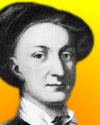 (source) |  Died 27 Feb 1735 (baptised 29 April 1667) Died 27 Feb 1735 (baptised 29 April 1667)  Scottish mathematician and physician. In 1692, he published Of the Laws of Chance, the first work on probability published in English, being his translation of a work by Huygens to which he added further games of chance. In 1710, he published a paper discussing the slight excess of male births over female births since 1629; it was perhaps the first application of probability to social statistics and included the first formal test of significance. As a political satirist, he wrote a series of pamphlets featuring the character John Bull that became an iconic Englishman. Arbuthnot joined with Jonathan Swift, Alexander Pope, and John Gay in founding the famous Scriblerus Club. From 1705 he was physician to Queen Anne until her death in 1714.«  |
| John Evelyn | |
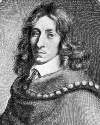 (source) |  Died 27 Feb 1706 (born 31 Oct 1620) Died 27 Feb 1706 (born 31 Oct 1620)English country gentleman, diarist, author of some 30 books on the fine arts, forestry, and religious topics. A lifelong member of the Royal Society, he produced for the commissioners of the navy the book, Sylva, or a Discourse of Forest-trees, and the Propagation of Timber (1664), encouraging estate owners to plant timber for the navy. It was the first important work on conservation, published at a time when English forests were being stripped of timber to build ships for the expanding British Navy. The book gave a description of the various kinds of trees, their cultivation, uses, and advice on pruning, insect control, wound treatment, and transplanting. The study, with numerous modifications, had gone through 10 editions by 1825. |
| FEBRUARY 27 - EVENTS | |
| Surgery on CCTV | |
 In 1947, the first closed-circuit broadcast of a surgical operation showed procedures to observers in classrooms. Dr. Alfred Blalock, at Johns Hopkins Hospital, Baltimore, Md., demonstrated two operations on the heart. Two more heart operations were also seen, and one on nerves of the spine. In 1947, the first closed-circuit broadcast of a surgical operation showed procedures to observers in classrooms. Dr. Alfred Blalock, at Johns Hopkins Hospital, Baltimore, Md., demonstrated two operations on the heart. Two more heart operations were also seen, and one on nerves of the spine. | |
| Solar radio | |
 In 1942, J.S. Hey discovered radio emissions from the Sun. In 1942, J.S. Hey discovered radio emissions from the Sun. | |
| Neutron | |
 In 1932, the neutron was discovered by Dr. James Chadwick. In 1932, the neutron was discovered by Dr. James Chadwick. | |
| Aspirin | |
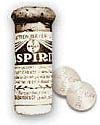 (source) |  In 1900, Felix Hoffman was issued a U.S. patent for Aspirin (No. 644,077) In 1900, Felix Hoffman was issued a U.S. patent for Aspirin (No. 644,077) |
| Saccharin | |
 In 1879, saccharin, the artificial sweetener, was discovered by Constantine Fahlberg at Johns Hopkins University in Baltimore, Maryland. In 1879, saccharin, the artificial sweetener, was discovered by Constantine Fahlberg at Johns Hopkins University in Baltimore, Maryland. | |
| Dental mallet | |
 In 1867, Dr. William G. Bonwill of Philadelphia, Penn., invented the dental mallet while watching a telegraph key sounder operate in a Philadelphia hotel. In 1867, Dr. William G. Bonwill of Philadelphia, Penn., invented the dental mallet while watching a telegraph key sounder operate in a Philadelphia hotel. | |
| Vaccination | |
 In 1813, first federal vaccination legislation enacted. In 1813, first federal vaccination legislation enacted. | |
- Deceased--sir Bernard Lovell
Sir Bernard Lovell August 31st, 1913 to August 6th, 2012 "Sir Bernard Lovell Dies at 98; a Radio Telescope Bears His Name" by Don R. Hecker August 8th, 2012 The New York Times Sir Bernard Lovell, a pioneer in radar and radio telescopes from the days when...
- Deceased--herbert Hauptman
Herbert Hauptman February 14th, 1917 to October 23rd, 2011 "Herbert Hauptman dies at 94; won Nobel Prize in chemistry" Herbert Hauptman's research on determining molecular structures using X-ray crystallography became indispensable to modern chemistry...
- Deceased--rosalyn Sussman Yalow
Rosalyn Sussman Yalow July 19th, 1921 to May 30th, 2011 "Rosalyn S. Yalow, Nobel Medical Physicist, Dies at 89" by Denise Gellene June 1st, 2011 The New York Times Rosalyn S. Yalow, a medical physicist who persisted in entering a field largely reserved...
- Deceased--aage Bohr
Aage Bohr June 19th, 1922 to September 8th, 2009 "Denmark's Nobel prize winner Aage Bohr dies at 87" by Jan M. Olsen September 19th, 2009 Associated Press COPENHAGEN — Aage Bohr, a nuclear physics professor and Nobel laureate like his father,...
- Deceased--edwin E. Salpeter
Edwin E. Salpeter December 3rd, 1924 to November 26th, 2008 "Edwin E. Salpeter, Leader in Astrophysics Study, Dies at 83" by The Associated Press November 29th, 2008 ITHACA, N.Y. (AP) — Edwin E. Salpeter, an astrophysicist widely known for his studies...
